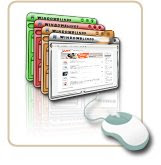
testpatterns The United States’ National Television System Committee (NTSC) analog television standard dates back to 1941. The U.S. Federal Communications Commission (FCC) upgraded it to incorporate color in 1953, and for the past half century, this standard has ruled the U.S. airways, enabling viewers to tune in to free over-the-air television, whether their TVs were built this year or inherited from a grandparent. But on 17 February 2009, NTSC broadcasts will end forever, replaced by the ATSC digital standard.
It took an act of Congress to make this switch from analog to digital—or rather several. The U.S. Congress established the Advanced Television Systems Committee, for which ATSC is named, in 1982. The FCC adopted the standard in 1996, and Congress assigned each television broadcaster a second piece of radio spectrum on which to simulcast digital programming along with analog, intending that extra real estate as a loan, to be returned when the vast majority of TV viewers in the country had begun relying on digital signals. Congress tried to call the loan in 2006, but it had set certain thresholds for digital penetration that had not been met. So Congress reset the date to 2009, picking mid-February as the perfect window between two major TV events—the Super Bowl and the NCAA “March Madness” basketball tournament.
IEEE Spectrum has been following the development of ATSC, the technology behind it, and its rollout for two decades. Now we’re tracking this final transition to an all-digital broadcast world, a transition that may not go as smoothly as Congress, the FCC, the broadcasters, the consumer electronics manufacturers, or the average viewer might hope. Follow the links below to review the technology and its history, and track what’s happening with the transition today (we’ll be updating these links regularly) as Spectrum counts down to the day analog TV dies. —Tekla S. Perry














